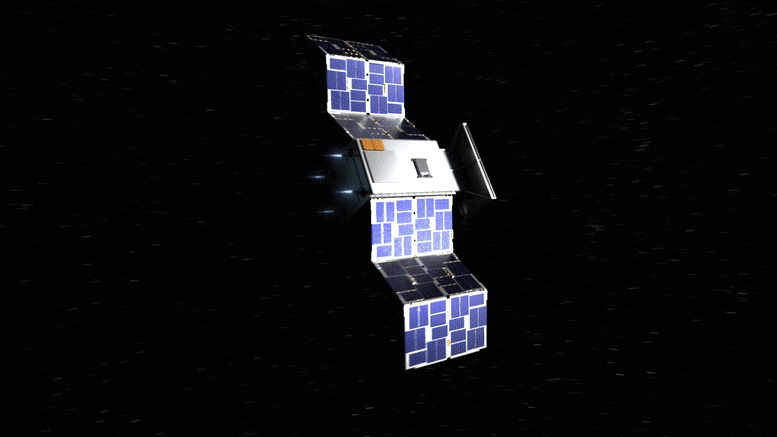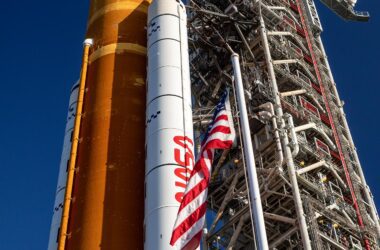
Le Cislunar Autonomous Positioning System Technology Operations and Navigation Experiment, ou CAPSTONE, est un CubeSat qui volera sur une orbite unique autour de la Lune, destinée à la future passerelle lunaire Artemis de la NASA. Sa mission de six mois contribuera à lancer une nouvelle ère d’exploration de l’espace profond. Crédit : NASA Ames Research Center
Après avoir perdu les communications avec CAPSTONE le 4 juillet, la première manœuvre de correction de trajectoire, qui était initialement prévue pour le matin du 5 juillet, a dû être reportée. Maintenant, après le rétablissement des communications le 6 juillet, ;” data-gt-translate-attributes=”[{” attribute=””>NASA’s CAPSTONE successfully completed its first trajectory correction maneuver, which started at 11:30 a.m. EDT (8:30 a.m. PDT) Thursday, July 7.
This was the first in a series of thruster burns over the next few months to more accurately target CAPSTONE’s transfer orbit to the Moon. The maneuver lasted just over 11 minutes and changed the spacecraft’s velocity by about 45 miles per hour (about 20 meters per second). CAPSTONE’s next trajectory correction maneuver is targeted for Saturday, July 9.
CAPSTONE is now about 289,000 miles (465,000 km) from Earth, beyond the orbit of the Moon. CAPSTONE will loop back around and arrive to its lunar orbit – called a near rectilinear halo orbit, or NRHO – November 13. CAPSTONE will fly in the NRHO for at least six months to study the dynamics of the orbit, which is the same one intended for Gateway, a lunar space station for science and human exploration under Artemis.
Two technology demonstrations on CAPSTONE could allow future spacecraft to navigate near the Moon without as much tracking required from Earth.

Trajectory Correction Maneuver 1. Credit: Advanced Space
Advanced Space provided more details on the maneuver:
- This is the first maneuver executed by the CAPSTONE spacecraft using its on-board propulsion system. Prior to this maneuver the propulsion system was commissioned and demonstrated during initial de-tumble after spacecraft deployment on July 4th and during prior momentum desaturation maneuvers on July 6th and earlier today on July 7th.
- The maneuver itself was designed to be approximately 20 m/s and initial radiometric-based reconstruction suggests it achieved approximately 19.85 m/s which represents an error of approximately 0.75 % which is well within expectations and predictions. These details will be further refined as more data is collected
- The maneuver was designed by the Advanced Space flight dynamics team based on navigation information collected by the Deep Space Network and processed by the Advanced Space flight dynamics team.
- The burn was commanded, and post-burn telemetry processed by operators at the Terran Orbital Mission Operations Center
- At time of maneuver execution, the spacecraft was approximately 465,000 km (289,000 miles) from the Earth (~13 times further than the GEO belt and ~81,000 km (~50,000 miles) further than the Moon).
- Prior to this maneuver the spacecraft was on a trajectory that would take it approximately 1.2 million km (750,000 miles) from Earth, after this maneuver the spacecraft is now targeting a trajectory that will take it approximately 1.4 million km (870,000 miles) from Earth (~39 times GEO, or 3.6 time the distance of the Moon)


